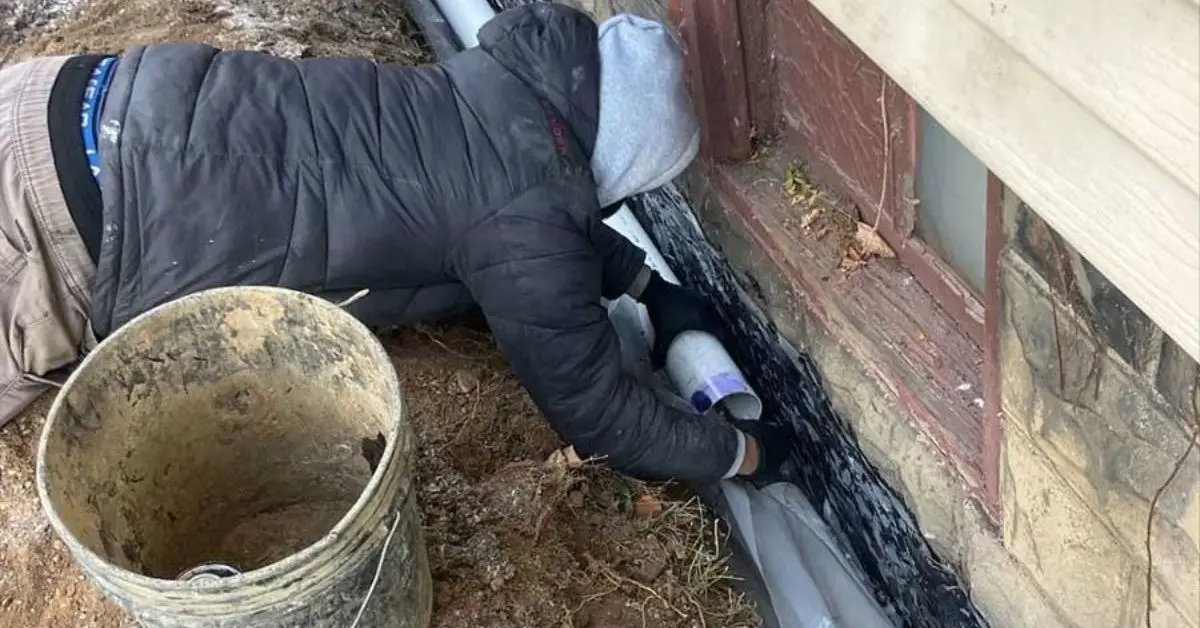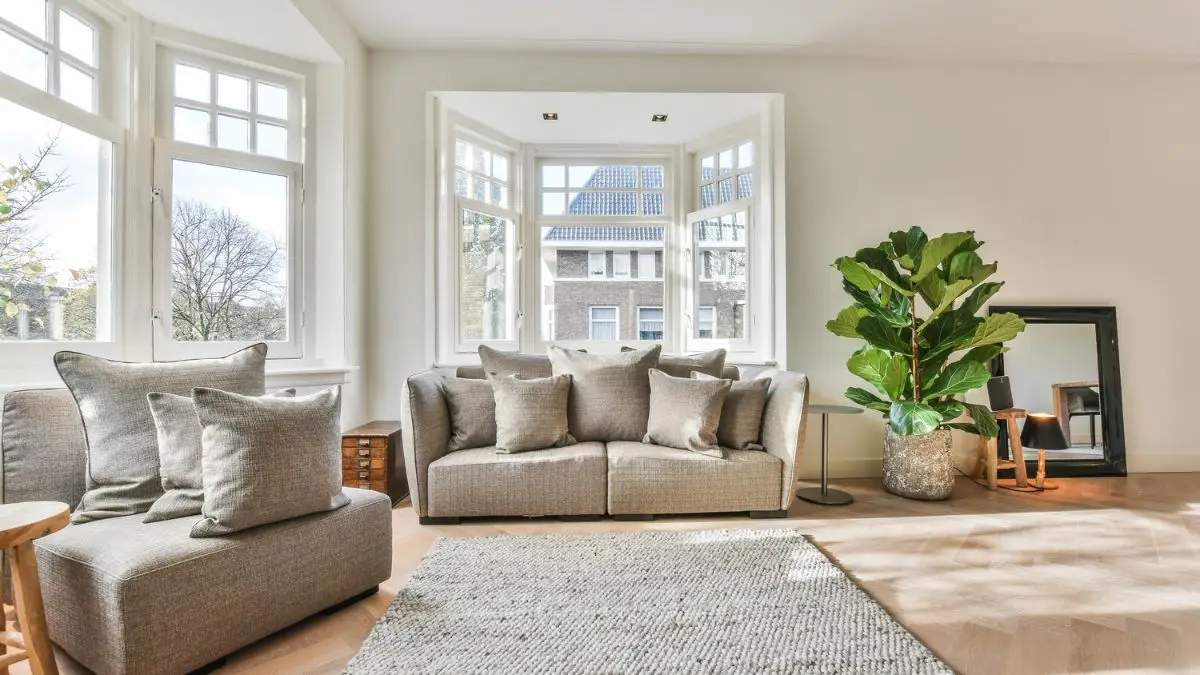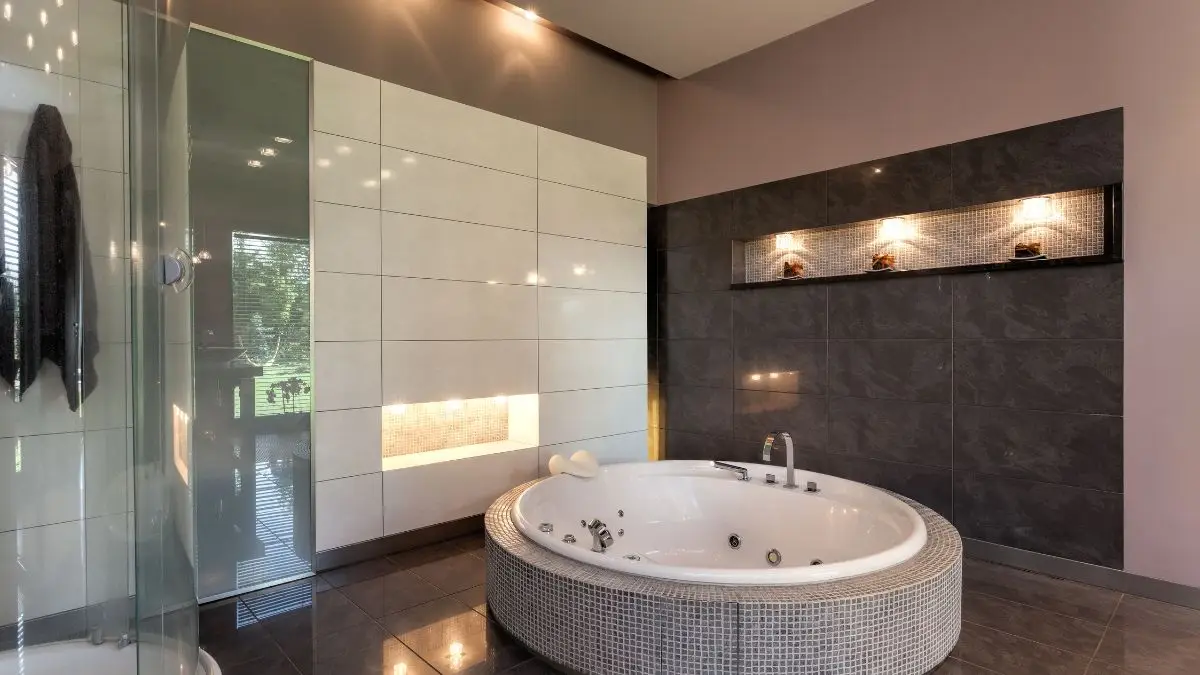How to Maximize Your Home s Potential: 10 Basement Conversion Ideas
Have you ever considered the possibility that your basement serves as more than just storage? Making your basement into a comfortable living space could be one of the best choices you make for your house, regardless of whether it’s an unutilized area full of old boxes or a chilly, damp room. It can raise the value of your house and provide you with additional room for friends, family, and hobbies.
You must have recognized the potential, but perhaps you don’t know where to begin. The good news is that you can make your basement into the ideal living area with a few professional pointers. Regardless of your budget, I’ll show you how to transform your basement into a comfortable and useful space in this article. Are you prepared to realize your basement’s full potential? Let’s get started!
1. Assess Your Basement s Potential
It’s crucial to determine whether your basement is actually appropriate for conversion before you even consider beginning the makeover. Spending time, money, and energy on a space that might have unreported problems is not something you want to do. To help you assess the potential of your basement, here is a checklist:
-
Ceiling Height:
The minimum height for a comfortable living space is around 7 feet, but the higher, the better. Low ceilings can make the space feel cramped and uncomfortable. Measure carefully to see if your basement offers enough headroom to make a living area feel open and spacious. -
Moisture Issues:
Basements are notorious for dampness, which can cause issues with mold and mildew. If your basement is prone to moisture, it s crucial to address it before starting any major work. A wet basement is not only uncomfortable, but it can also lead to structural damage over time. -
Structural Concerns:
Check for any signs of cracks in the foundation or uneven floors. These can indicate major structural issues that need professional attention. It s a good idea to have a structural engineer or a contractor assess these issues if you re unsure about the severity. Before diving into the renovation, it s crucial to check your basement for any potential flooding risks, as a flooded basement can cause long-term damage. For more tips on handling flooding, check out our9 Things to Do Immediately After Basement Flooding
.
-
Ventilation:
Proper airflow is essential in any basement conversion to prevent the space from feeling musty. If your basement lacks windows, consider adding a ventilation system to improve air quality. Inadequate ventilation can lead to poor air circulation, which may lead to mold growth.
Do not hesitate to have an expert inspect your property if you have any doubts about any of these concerns. Making ensuring the area is secure and prepared for a conversion is always worth the expense. To get the area in top condition, a contractor or home inspector can assist you find issues you might have overlooked and provide remedies.
2. Moisture Control and Waterproofing
The deadliest enemy of your basement is moisture. It can cause mold, mildew, and long-term damage if ignored, which might make your remodeling project a complete failure. Here are some tips for managing moisture and safeguarding your recently transformed area:
-
Install a Sump Pump:
A sump pump can help keep your basement dry by pumping out excess water that may accumulate during heavy rain or snowmelt. This is a must-have if you live in a flood-prone area. -
Use Dehumidifiers:
A dehumidifier helps remove moisture from the air, making it less likely for mold and mildew to form. It s an inexpensive and effective tool for controlling moisture, especially if your basement is naturally humid. -
Add Insulation:
Proper insulation not only keeps your basement comfortable but also helps prevent condensation, which can lead to moisture issues. Rigid foam insulation is a good option for basements, as it s moisture-resistant and energy-efficient. -
Moisture-Resistant Paints & Materials:
Use moisture-resistant paints on the walls and floors to further safeguard your basement from dampness. Consider moisture-resistant drywall or cement board for walls, and opt for vinyl or tile flooring instead of carpet, which can trap moisture.
In basements, moisture problems can be a major worry. It is crucial to take preventative measures if you are concerned about mold or water damage. Read our post on 7 Things Home Insurance Misses – Avoid These Costly Surprises for additional tips on how to avoid unpleasant surprises when it comes to home upkeep.
A vital step in making sure your basement conversion lasts is moisture control, so don’t neglect it. For more in-depth waterproofing techniques, consult reliable sites such as Family Handyman for professional guidance.
3. Plan Your Layout and Design
It’s time to consider the space’s design now that your basement is prepared for remodeling. The secret to designing a comfortable, livable space that meets your demands is a functional plan. This is how to organize it:
-
Create Open Spaces:
You want the space to feel airy and not cramped. Avoid bulky furniture or heavy decor that can close in the room. Instead, opt for open shelving or multi-purpose furniture like fold-out desks or sleeper sofas. -
Zoning Different Areas:
One of the best ways to maximize a basement is by creating zones. You can have a separate area for sleeping, working, or relaxing without the space feeling too divided. For example, consider setting up an office nook in one corner or a small dining area. This makes the space more functional and versatile. -
Flow and Traffic:
Be mindful of how people will move through the space. Make sure to leave enough room between furniture and walls to ensure smooth traffic flow. If you re working with a smaller basement, go for modular furniture that can be rearranged based on need.
To have a better understanding of layout possibilities that suit different basement sizes, look at floor plan ideas and design concepts from websites such as The House Designers.
You may design a basement that serves your daily needs and looks fantastic with proper planning. Don’t forget to make it comfortable and unique to your own style while keeping utility in mind!
4. Lighting and Ventilation
The success or failure of a basement conversion depends on the ventilation and lighting. If these two things are absent, your basement may feel dreary, wet, and uninviting. Don’t worry, though! You can turn your basement into a light-filled, spacious, and comfortable area with a few clever fixes. Here’s how:
-
Maximizing Natural Light:
Natural light is a game-changer, especially in a basement. The more sunlight you can let in, the less you ll need to rely on artificial lighting. If possible, add or enlarge windows, particularly
egress windows
, which are not only great for light but also crucial for safety.
Light wells
are also a great option these are sunken areas around basement windows that allow more light to enter from above. Even small changes can make a huge difference in brightening the space. -
Cost-effective Artificial Lighting:
If natural light is limited, don t worry.
LED lighting
is a cost-effective and energy-efficient option that works wonders in basement spaces. Consider installing
recessed lighting
or track lighting for a clean, modern look that won t take up floor space. Floor lamps and wall sconces can also help make the space feel cozy without cluttering it. Layer your lighting use a combination of ambient, task, and accent lighting to ensure every corner feels welcoming. -
Ventilation for Fresh Air:
Proper ventilation is essential to keep your basement from feeling musty or stale. If your basement lacks windows, consider installing a
ventilation system
to improve airflow.
Exhaust fans
, air exchanges, and even simple
dehumidifiers
can keep the air fresh and dry, preventing mold growth. When renovating, it s critical to plan for ventilation to ensure the space remains comfortable and safe for use.
To prevent your basement from feeling musty or stale, proper ventilation and lighting are crucial. Consider reading our post on how criminals break into homes if you’re also worried about the general safety and security of your house.
See No Space Like Home for professional advice on basement renovations for additional ideas on designing a well-ventilated basement.
5. Flooring Options for Comfort and Durability
When converting your basement, selecting the appropriate flooring is essential. Because basements frequently experience moisture and temperature changes, the flooring needs to be both pleasant and long-lasting. Consider these fantastic flooring options:
-
Vinyl Plank Flooring:
Vinyl plank is a popular choice for basements because it s moisture-resistant, easy to clean, and comfortable underfoot. It also comes in a wide variety of colors and designs, mimicking wood or stone without the high price tag. Plus, it s relatively simple to install yourself, making it budget-friendly. -
Engineered Hardwood:
If you love the look of wood, engineered hardwood is a solid option. Unlike traditional hardwood, engineered wood is less prone to warping from moisture. It provides the same rich aesthetic but is more durable for basement conditions. Keep in mind, it can be more expensive than vinyl plank but provides a premium look. -
Moisture-Resistant Carpet:
Carpet is a great option for creating a cozy, comfortable atmosphere. But, in a basement, it s essential to choose
moisture-resistant carpet
to prevent mold and mildew buildup. Be sure to add a
subfloor system
that includes a moisture barrier to further protect the flooring. While carpet can be more challenging to maintain in a basement setting, it offers warmth and soundproofing benefits. -
Subfloor Systems:
No matter which flooring type you choose, a
subfloor system
is crucial in basements to prevent moisture from reaching the finished floor. These systems help insulate and provide a barrier between the concrete floor and the flooring material, keeping the area warmer and drier.
Every flooring option has advantages and disadvantages, so it’s critical to consider your lifestyle, budget, and the particular requirements of your basement. To choose the best option for your house, take into account the amount of moisture in your basement as well as your intended use of the area.
6. Adding Functional Features (e.g., Kitchenette, Bathroom)
Consider including useful elements like a kitchenette or bathroom to further expand the use of your basement. These improvements can increase the basement’s usability and value by turning it into a fully functional living space. Here are some things to be aware of:
-
Kitchenette or Wet Bar:
Adding a small
kitchenette
or
wet bar
is a fantastic way to make your basement feel like a full living space. Whether it s for hosting guests, having a family movie night, or creating an area for extended family, a kitchenette allows for a more functional space. It doesn t have to be extravagant a mini-fridge, sink, and some counter space can do wonders. -
Bathroom Addition:
If you plan to use your basement as a guest room, rental unit, or even just an extra living area, adding a
bathroom
is a major perk. A bathroom in the basement increases comfort and convenience, allowing your guests or family members to have their own private space. It also adds a significant amount of value to your home. -
Professional Help:
For both the kitchenette and bathroom installations, it s a good idea to consult professionals, especially when it comes to plumbing and electrical work. These features require specific expertise to ensure safety and functionality.
Seek advice from professionals or research resources for home additions to assist with the planning of your bathroom or kitchenette project. To gain a better understanding of the prices involved, think about requesting estimates from reputable contractors or plumbers.
Your basement might feel like a real extension of your living area if you add these elements. These useful improvements will increase the potential of your basement, whether you’re searching for a guest retreat, an entertainment space, or a self-contained rental apartment.
7. Insulation for Comfort and Energy Efficiency
Proper insulation of your basement is crucial for year-round comfort and low energy expenses. Your basement will feel unbearably hot in the summer and brutally cold in the winter if it is not properly insulated. Proper insulation guarantees that your home stays energy-efficient and maintains a controlled temperature. This is how to do it:
-
Insulate Floors, Walls, and Ceilings:
Start with insulating the floors, especially if you have concrete flooring.
Rigid foam insulation
is an excellent option for this because it s moisture-resistant and helps keep the floor warm. For the walls, you can use
fiberglass batt insulation
or
spray foam insulation
. Spray foam is especially good for tight spaces and irregularly shaped areas. Lastly, don t forget the ceiling! Insulating the ceiling will keep heat from escaping upstairs in the winter and prevent the basement from absorbing heat during the summer. -
Insulation Options to Consider:
-
-
Spray Foam Insulation
: Provides a high R-value and effectively seals gaps, making it one of the best choices for preventing drafts. -
Fiberglass Batt Insulation
: An affordable, widely available option that s easy to install. While it s not as efficient as spray foam, it s still a solid choice for many basements. -
Reflective Barriers
: These are great for reflecting heat away from the basement, especially if you re converting your basement into a living area where you want to maintain cooler temperatures in the summer.
-
-
-
Sealing Air Leaks:
One of the biggest energy drains is air leaks around windows and doors. If you have drafty areas, use weatherstripping or caulking to seal them up. It s a simple and inexpensive way to enhance the effectiveness of your insulation. Be sure to check areas where pipes or cables enter and exit your basement; these can be major leak points.
-
-
Spray Foam Insulation
: Provides a high R-value and effectively seals gaps, making it one of the best choices for preventing drafts. -
Fiberglass Batt Insulation
: An affordable, widely available option that s easy to install. While it s not as efficient as spray foam, it s still a solid choice for many basements. -
Reflective Barriers
: These are great for reflecting heat away from the basement, especially if you re converting your basement into a living area where you want to maintain cooler temperatures in the summer.
-
-
Spray Foam Insulation
: Provides a high R-value and effectively seals gaps, making it one of the best choices for preventing drafts. -
Fiberglass Batt Insulation
: An affordable, widely available option that s easy to install. While it s not as efficient as spray foam, it s still a solid choice for many basements. -
Reflective Barriers
: These are great for reflecting heat away from the basement, especially if you re converting your basement into a living area where you want to maintain cooler temperatures in the summer.
In addition to improving comfort, properly installed insulation lowers utility costs. It’s among the most economical additions you can make to your converted basement.
8. Choosing the Right Color Scheme and Furnishings
The secret to having your basement feel like a real extension of your house is to create a warm and welcoming ambiance. The environment and mood are greatly influenced by the furniture and color choices. Here’s how to pick the ideal decor and furniture for maximum comfort:
-
Color Scheme:
Light and neutral colors are the way to go for basement conversions.
Soft whites, light grays, and beiges
can make the space feel bigger and brighter. Dark colors, while stylish, can make a basement feel smaller and more closed in, so use them sparingly perhaps as an accent wall or in accessories.
Pastels
or even light blues and greens can create a calm and refreshing atmosphere, making the basement feel welcoming and relaxing. -
Cozy D cor:
Once you ve chosen the colors, it s time to add d cor that brings warmth and personality to the space. Consider
rugs
, especially those with plush textures, to add comfort and help with insulation.
Throw pillows
and
blankets
can make a couch feel much more inviting. Adding
wall art
or personal items, like family photos, can make the space feel homier and truly yours. -
Furniture Choices:
For smaller basements, opt for
space-saving furniture
like fold-out sofas or
modular storage units
.
Comfortable seating
is essential think soft chairs or a sectional that invites relaxation. Budget-conscious renovators can consider
DIY furniture
projects or buying second-hand furniture to save costs while still achieving a stylish look. Adding
multifunctional furniture
that doubles as storage can be a smart way to maximize space without sacrificing comfort.
The secret to turning your basement from a frigid, unusable space into a useful and welcoming living area is to create a warm and unique atmosphere.
9. Cost Breakdown and Budgeting for Your Basement Conversion
Budgeting is one of the most crucial aspects of remodeling your basement. Costs might quickly get out of control if there is no clear plan. What to anticipate when organizing your conversion is broken out here:
-
Material Costs:
Materials will likely take up the bulk of your budget. For instance, insulation, flooring (like vinyl or engineered wood), drywall, paint, and other finishes can add up quickly. Be sure to factor in any moisture-resistant materials, especially if you re working with a basement that has moisture concerns. On average, expect to spend anywhere from $3,000 to $7,000 on materials, depending on the quality and type of materials you choose. -
Labor Costs:
Hiring professionals to handle tasks like electrical work, plumbing (for bathrooms or kitchenettes), and structural repairs can increase costs. Labor prices will depend on where you live, but expect to pay between $50 to $150 per hour for skilled contractors. If you re on a budget, consider doing some tasks yourself, like painting or installing flooring, while leaving specialized work to the pros. -
Permits and Inspections:
Depending on your location and the scale of the project, you may need permits for plumbing, electrical work, or structural changes. Permit costs can range from $100 to $1,000, so it s crucial to factor these into your budget. Additionally, you may want to set aside some funds for inspections to ensure the work is up to code. -
Affordable DIY Alternatives:
There are ways to save money without sacrificing quality. DIY tasks, such as painting, installing basic flooring (like vinyl planks), or even creating your own d cor can lower costs significantly. Opting for
budget-friendly materials
like plywood for custom furniture or laminate flooring can also save you a lot. -
High-return Investments:
If you re looking to add significant value, investing in
waterproofing
and
insulation
will provide the best returns. These may cost more upfront but can save you money in the long run by preventing moisture problems and improving energy efficiency.
To make sure your basement makeover stays within your means, thorough planning and budgeting are essential. To have a better understanding of expenses relevant to your area and needs, use online calculators or seek advice from experts. Maintaining a realistic budget will help you stay stress-free and on schedule with your project.
Conclusion: Turning Your Basement into a Dream Living Space
You are now prepared to turn your basement into a comfortable and useful living area. You get everything you need to get started, including professional advice on evaluating your area, managing moisture, organizing your layout, and selecting the appropriate materials.
Plan your basement makeover now to transform that wasted space into a lovely, useful room!
If you have any questions or comments, please leave them in the comments section below.
For all of your home remodeling needs, visit Build Like New for further pointers and professional guidance!
Notice: The guidance in this article is intended solely for informational reasons. Always consult with a professional contractor or specialist before starting your basement renovation to ensure the best results for your specific space and needs.
Contents Table
-
1. Assess Your Basement s Potential
-
2. Moisture Control and Waterproofing
-
3. Plan Your Layout and Design
-
4. Lighting and Ventilation
-
5. Flooring Options for Comfort and Durability
-
6. Adding Functional Features (e.g., Kitchenette, Bathroom)
-
7. Insulation for Comfort and Energy Efficiency
-
8. Choosing the Right Color Scheme and Furnishings
-
9. Cost Breakdown and Budgeting for Your Basement Conversion
-
Conclusion: Turning Your Basement into a Dream Living Space




